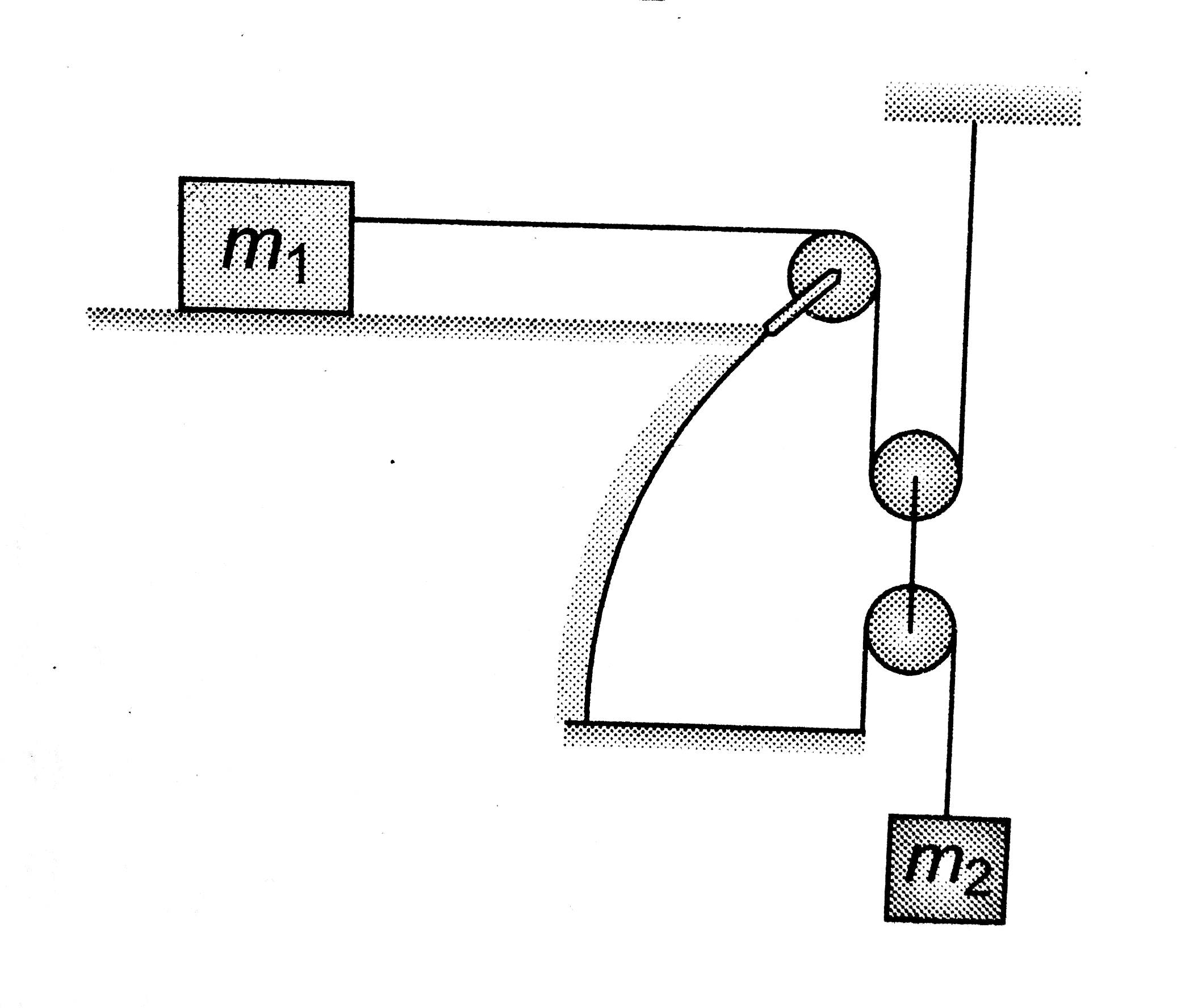Two blocks M1 and M2 having equal mass are free to move on a horizontal frictionless surface. M2 is attached to a massless spring as shown in figure. Initially M2 is at rest and M1 is moving toward M2 with speed υ and collides head-on with M2.

While spring is fully compressed all the KE is M1 is stored as PE of spring
While spring is fully compressed the system momentum is not conserved though final momentum is equal to initial momentum
If spring is massless, the final state of the M1 is state of rest
If the surface on which blocks are moving has friction, the collison cannot be elastic

(c ) Consider the adjacent diagram when M1 comes in contact with the sprin, M1 is retarded by the spring force and M2 is accelerated by the spring force.
(a) The spring will continue to compress unitl the two blocks acquire common velocity.
(b) As surface are frictionless momentum of the system will be conserved.
(c ) If spring is massles whole energy of M1 will be imparted to M2andM1 will be at rest, then
(d) Collision is inelastic even if friction is not involved

Similar Questions
Two balls A & B of mass m1 and m2 are kept on a horizontal smooth surface. A is given a velocity towards B so that they perform head on collision
View SolutionTwo blocks m1 and m2 are pulled on a smooth horizontal surface, and are joined together with a spring of stiffness k as shown in Fig. Suddenly, block m2 receives a horizontal velocity v0, then the maximum extension xm in the spring is

View Solution
Knowledge Check
Two blocks M1andM2 having equal masses are to move on a horizontal frictionless surface. M2 is attached to a massless spring as shown in figure. Initially M2 is at rest and M1 is moving toward M2 with speed v and collides head-on with M2.
 AWhile spring is fully compressed, all the kinetic energy of M1 is stored as potential energy of springBWhile spring is fully compressed, the system's momentum is not conserved, though final momentum is equal to initial momentum.CIf spring is massless, the final state of the M2 is state of rest.DIf the surface on which blocks are moving has friction, then collision cannot be elastic
AWhile spring is fully compressed, all the kinetic energy of M1 is stored as potential energy of springBWhile spring is fully compressed, the system's momentum is not conserved, though final momentum is equal to initial momentum.CIf spring is massless, the final state of the M2 is state of rest.DIf the surface on which blocks are moving has friction, then collision cannot be elastic
Two block of masses m1 and m2 are connected as shown in the figure. The acceleration of the block m2 is:

View SolutionTwo blocks of mass m1 and m2 (m1<m2) are connected with an ideal spring on a smooth horizontal surface as shown in figure. At t = 0 m1 is at rest and m2 is given a velocity v towards right. At this moment, spring is in its natural length. Then choose the correct alternative :

View SolutionTwo blocks of mass m1 and m2 (m1<m2) are connected with an ideal spring on a smooth horizontal surface as shown in figure. At t = 0 m1 is at rest and m2 is given a velocity v towards right. At this moment, spring is in its natural length. Then choose the correct alternative :

View SolutionTwo masses m1 and m2(m2>m1) are hanging vertically over frictionless pulley. The acceleration of the two masses is :

View SolutionTwo masses m1 and m2(m2>m1) are hanging vertically over frictionless pulley. The acceleration of the two masses is :

View SolutionTwo blocks of masses m1 and m2 are connected by a massless spring and placed on smooth surface. The spring initially stretched and released. Then :
View SolutionTwo blocks of masses M1 and M2 are connected to each other through a light spring as shown in figure. If we push mass M1 with force F and cause acceleration a1 in mass M1. What will be the magnitude of accleration in M2?

View Solution
